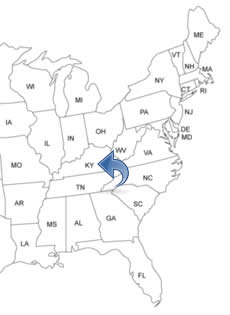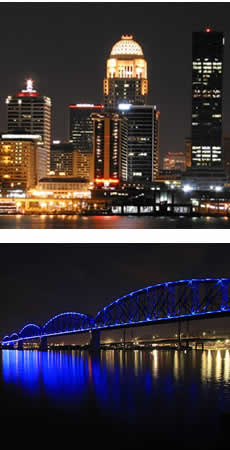KENTUCKY PEOPLE SEARCH!
- ✔ Contact Info
- ✔ Phone Numbers
- ✔ Criminal Records
- ✔ Income Info
- ✔ Neighbors
- ✔ People's Age
- ✔ Property Ownership
- ✔ And Much More
Louisville, Kentucky
Louisville is located on the Ohio River in the north-central part and is the largest city in the U.S. State of Kentucky. Louisville is historically known as the Gateway to the South and has long been a transportation center for the region. Louisville's Main Street has the second largest collection of cast-iron storefronts facades, only New York City has more. The Old Louisville neighborhood near downtown is the largest Victorian neighborhood in America.
To See And To Do In Louisville
- Frazier Historical Arms Museum
- Kentucky Derby Museum
- Louisville Slugger Museum
- Kentucky Museum of Art and Craft
- Louisville Science Center
- Biking
- See The Parks
- Jefferson Mall
- Oxmoor Center
- Mall St. Matthews
History Of Louisville - Timeline
The first European settlement that became the city of Louisville was founded in 1778 when Fort Nelson was built. In 1780, the first fire department was established and Thomas Jefferson, Governor of Virginia, approved the town charter of Louisville and the city was named in honor of King Louis XVI of France.
The University of Louisville was founded in 1798. In 1807, the Louisville Gazette newspaper was published. In 1830, the Louisville and Portland Canal opened. In 1835, the Louisville Metro Hall was built.
In 1837, the Louisville Medical Institute was founded. It was a medical school and "the ancestor" of the university's present-day medical school. In 1850, the railroad came. In 1855, J. F. Hillerich opened his woodworking shop. During the Civil War Louisville was a major stronghold of Union forces. It was the center of planning, supplies, recruiting and transportation. In 1868, the Fourteenth Street Bridge opened.
Since 1875, the horse racetrack Churchill Downs has been the home of the Kentucky Derby. In 1884, the Louisville Slugger baseball bat was made by Andrew Hillerich in his father's woodworking shop in Louisville.
In 1885, the railroad bridge "Kentucky & Indiana Terminal Bridge" opened. In 1889, the Union Station was completed. In 1890, the city was devastated and its downtown nearly destroyed when a tornado tore through. An estimated 74 to 120 people were killed. In 1894, the St. Peter's German Evangelical Church was built.
In 1900, more than 204,700 people lived in the city. In 1921, the airport "Bowman Field" opened. In 1923, the 16-story hotel in downtown, Brown Hotel, opened. In 1930, the Masonic Temple was built. In 1932, Gene Snyder United States Courthouse was built. (Known as United States Post Office, Court House, and Custom House).
In 1937, heavy rain caused the Great Flood of 37, submerged about 70% of the city, caused the loss of power, and forced the evacuation of 175,000 residents. In 1947, Louisville International Airport opened.
In 1956, the multipurpose arena "Freedom Hall" opened. In 1963, the John F. Kennedy Memorial Bridge opened. In 1974, a major tornado hit Louisville and destroyed several hundred homes. In 2005, the Muhammad Ali Center opened. It is a museum and a cultural center that was built as a tribute to the boxer Muhammad Ali.

